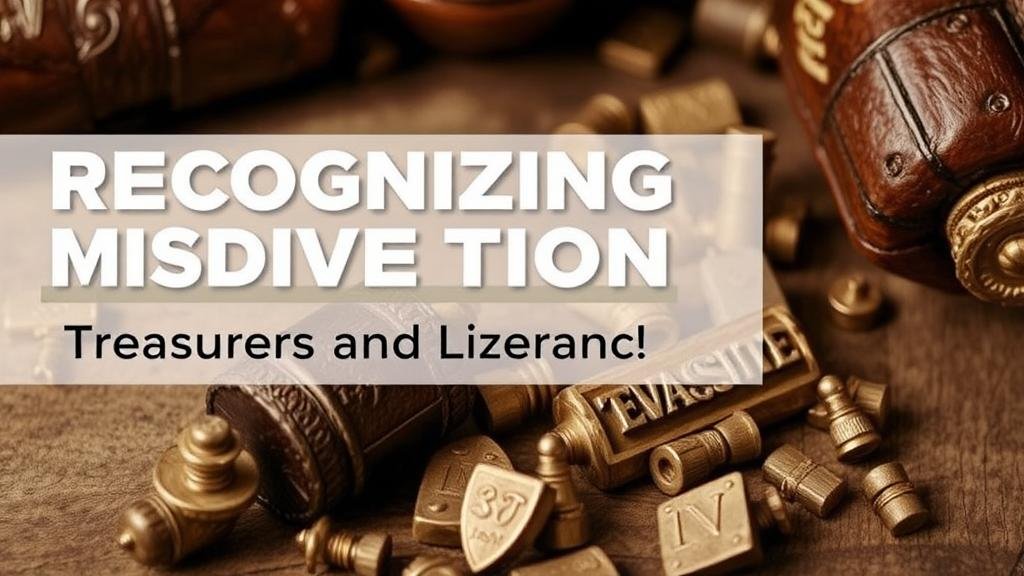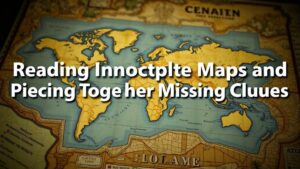Recognizing Misdirection in Treasure Clues and Legends
Recognizing Misdirection in Treasure Clues and Legends
Throughout history, treasure seekers have embarked on journeys fueled by the allure of hidden riches, guided by tantalizing clues and legends. But, many of these clues often contain layers of misdirection designed to deter unworthy seekers or safeguard the secrets of the treasures. Recognizing misdirection is critical for anyone wishing to separate fact from fiction in their quest for treasure.
The Nature of Misdirection
Misdirection in treasure clues can take several forms. At its core, misdirection serves as a tactical form of deception, wherein the author of the clue intentionally leads the seeker away from the intended path. This diversionary tactic can be employed for various reasons, including protecting valuable resources, creating intrigue, or ensuring that only the most dedicated seekers find the treasure.
For example, a well-known example of misdirection is found in the legend of Captain Kidd’s treasure. The story suggests that Kidd buried his loot on a remote Caribbean island, leading countless treasure hunters to pursue false leads based on the tales told by sailors who spoke of misleading maps and erroneous locations. In reality, historical evidence indicates Kidds treasure was likely never buried at all, demonstrating the commonality of misdirection in treasure legends.
Types of Misdirection
- Obscure Language: Clues may employ cryptic language or archaic terms that mislead the reader. This employs the principle of ambiguity–while the terms may seem meaningful, they can often lead seekers astray.
- False Locations: Often, the area suggested in treasure maps can be entirely unrelated to the actual location of the treasure. This may consist of real landmarks that have no association with the treasure at all.
- Historical Context: Misleading historical context can accompany clues, where the significance of a particular date or event is exaggerated or misrepresented.
Recognizing Misdirection
To effectively recognize misdirection, one must engage in critical analysis of the clues and legends. This involves dissecting clues to determine their credibility and relevancy. Below are strategies to employ during such an analytical process:
- Research Historical Context: Conduct comprehensive research on the historical background related to the treasure legend. Understanding the lives of figures involved can provide insights into potential motives for misdirection.
- Language Analysis: Analyze the language and structure of the clues. Are they unnecessarily complex? Are there any patterns that may hint at an intentional obfuscation?
- Corroborate with Other Sources: Seek corroborative evidence from multiple sources. If legends and folklore align across different accounts, they may carry more weight than a single outlier suggestion.
Case Study: The Oak Island Mystery
A prime example of psychological misdirection in treasure hunting is the infamous Oak Island mystery. Since the late 18th century, treasure hunters have sought riches purportedly hidden in a complex series of workings on the island. legend involves various vague clues, including the famous “money pit†that has attracted extensive media attention and countless excavations.
Despite extensive efforts, no definitive treasure has been recovered. Skeptics argue that the numerous excavations have created a culture of misdirection–the quest for treasure generates hope and excitement, often entrenching seekers in sources of misinformation. In fact, studies indicate that over 90% of treasure seekers at Oak Island may be pursuing misrouted legends designed to entice rather than inform.
Real-World Applications of Recognizing Misdirection
The principles of recognizing misdirection in treasure clues can be applied to various fields beyond treasure hunting. For example, in information security, individuals can learn to identify red herrings in phishing scams, where trust is built through deceptive communications. Similarly, consumers can apply these principles when assessing advertising campaigns that employ misleading claims or data.
Actionable Takeaways
In summary, recognizing misdirection in treasure clues and legends is essential for effectively navigating the complicated world of treasure hunting. By engaging in comprehensive research, analyzing language, and corroborating with multiple sources, seekers can better decipher the truth behind exciting narratives. Awareness of these principles not only enhances treasure hunting pursuits but also fosters critical thinking skills applicable in various aspects of life.

